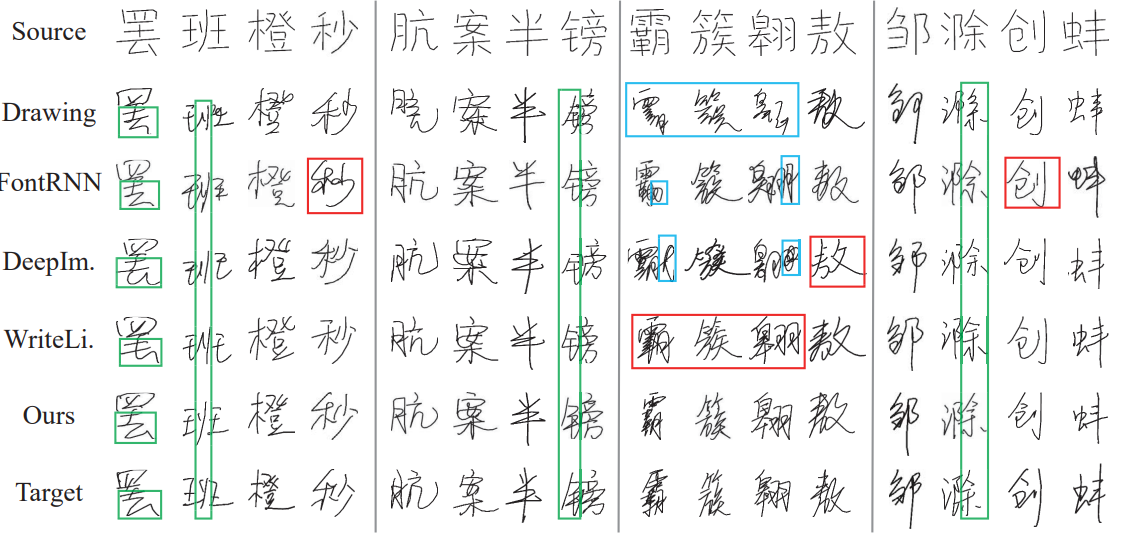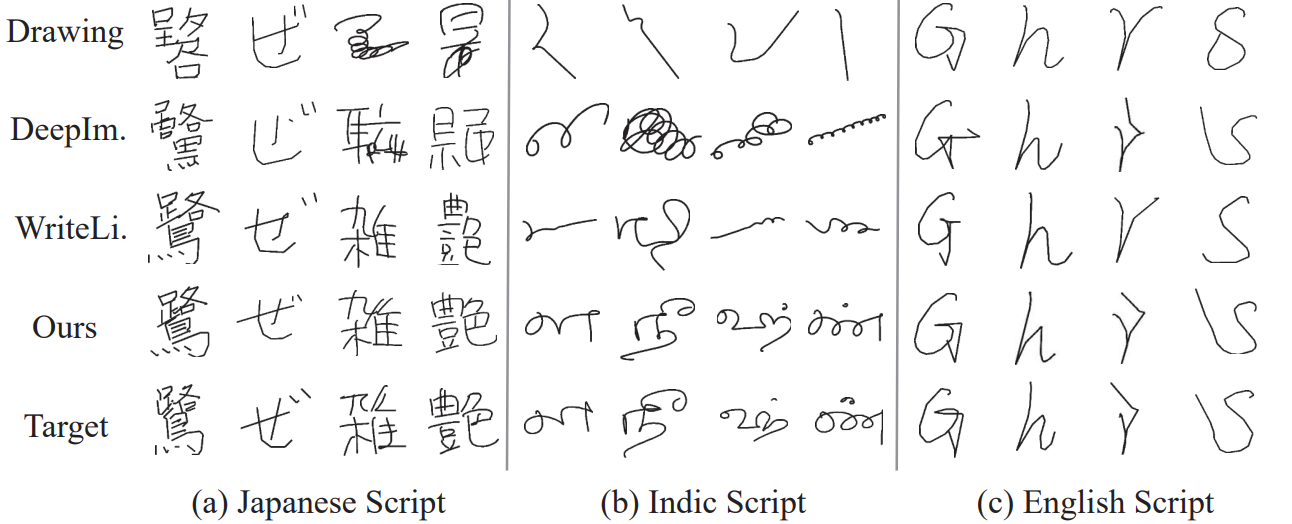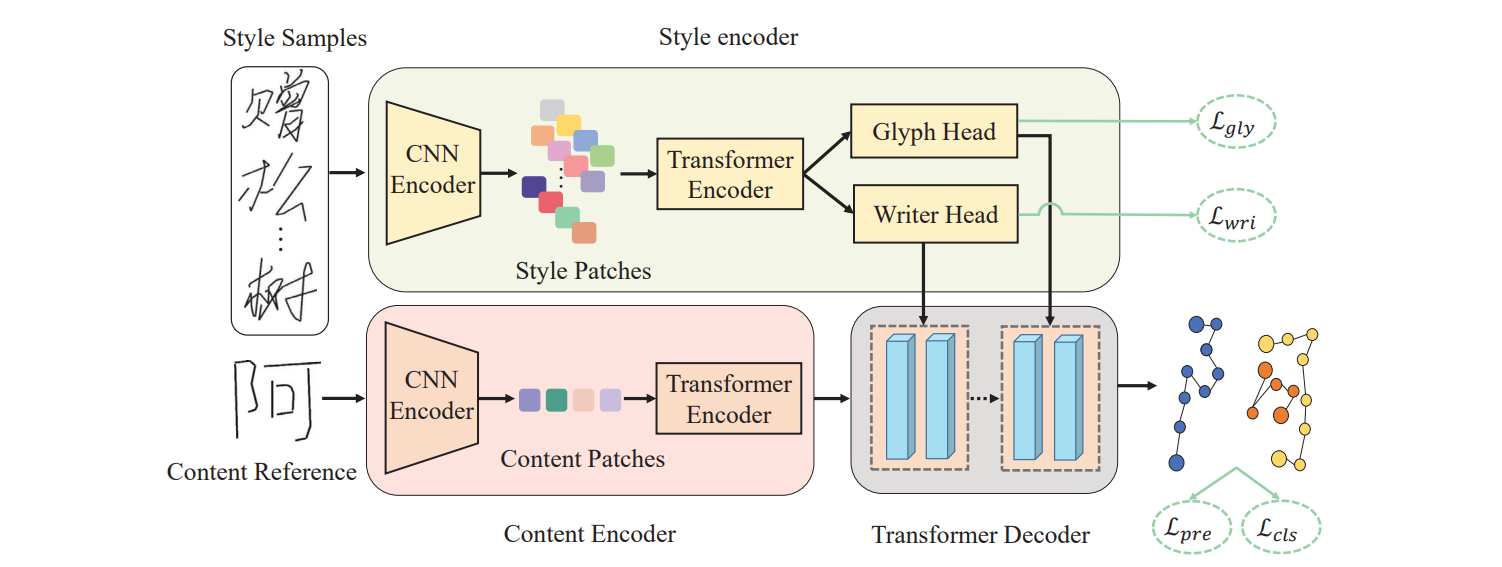- The proposed style-disentangled Transformer (SDT) generates online handwritings with conditional content and style. Existing RNN-based methods mainly focus on capturing a person’s overall writing style, neglecting subtle style inconsistencies between characters written by the same person. In light of this, SDT disentangles the writer-wise and character-wise style representations from individual handwriting samples for enhancing imitation performance.
- We extend SDT and introduce an offline-to-offline framework for improving the generation quality of offline Chinese handwritings.
- Online Chinese handwriting generation

- Applications to various scripts

- Extension on offline Chinese handwriting generation

python 3.8
pytorch >=1.8
easydict 1.9
einops 0.4.1
SDT/
│
├── train.py - main script to start training
├── test.py - generate characters via trained model
├── evaluate.py - evaluation of generated samples
│
├── configs/*.yml - holds configuration for training
├── parse_config.py - class to handle config file
│
├── data_loader/ - anything about data loading goes here
│ └── loader.py
│
├── model_zoo/ - pre-trained content encoder model
│
├── data/ - default directory for storing experimental datasets
│
├── model/ - networks, models and losses
│ ├── encoder.py
│ ├── gmm.py
│ ├── loss.py
│ ├── model.py
│ └── transformer.py
│
├── saved/
│ ├── models/ - trained models are saved here
│ ├── tborad/ - tensorboard visualization
│ └── samples/ - visualization samples in the training process
│
├── trainer/ - trainers
│ └── trainer.py
│
└── utils/ - small utility functions
├── util.py
└── logger.py - set log dir for tensorboard and logging output
We provide Chinese, Japanese and English datasets in data. Please download these datasets, uzip them and move the extracted files to /data.
- We provide the pre-trained content encoder model in model_zoo. Please download and put it to the /model_zoo.
- We provide the well-trained SDT model in saved_weights so that users can get rid of retraining one and play it right away.
Training
- To train the SDT on the Chinese dataset, run this command:
python train.py --cfg configs/CHINESE_CASIA.yml --log Chinese_log
- To train the SDT on the Japanese dataset, run this command:
python train.py --cfg configs/Japanese_TUATHANDS.yml --log Japanese_log
- To train the SDT on the English dataset, run this command:
python train.py --cfg configs/English_CASIA.yml --log English_log
Qualitative Test
- To generate Chinese handwritings with our SDT, run this command:
python test.py --pretrained_model checkpoint_path --dir Generated/Chinese
- To generate Japanese handwritings with our SDT, run this command:
python test.py --pretrained_model checkpoint_path --dir Generated/Japanese
- To generate English handwritings with our SDT, run this command:
python test.py --pretrained_model checkpoint_path --dir Generated/English
Quantitative Evaluation
- To evaluate the generated handwritings, you need to set
data_pathto the path of the generated handwritings (e.g., Generated/Chinese), and run this command:
python evaluate.py --data_path Generated/Chinese

